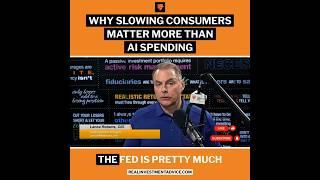| Inflation in the system is much stickier than people anticipated. Corporations are passing on prices to the everyday consumer, and we’ve yet to see any sort of mitigation. It begs the question: How high can prices go before there’s a breaking point when consumers begin to push back? In this week’s episode of Global Macro Update, Samuel Rines, managing director of Corbu LLC, joins Ed D’Agostino to discuss how today’s inflationary environment boils down to the acronym POV and factors into the Fed’s next moves. They also cover… – The craziness of “revenge travel” – Widespread tech layoffs – Low unemployment, rising wages due to the “Walmart Effect,” and how Middle America continues to play catch-up …along with Sam’s framework that helps clarify some of the labor market’s contradictions. For even more of his insights, make sure to follow Sam on Twitter. Want a transcript? Sign up for our free weekly e-letter, and you’ll get a transcript every week, plus a summary and link to the video: https://www.mauldineconomics.com/go/JM499G/MEC _____________ Video timestamps: 1:00 – Today’s inflationary environment and the meaning of POV 2:43 – Why prices are not starting to come back down 6:00 – Whether the labor shortage plays a role on prices 8:01 – The Fed’s next moves 9:43 – How much higher the federal funds rate can go 12:03 – Consumers’ breaking point 15:08 – Sam’s framework for the labor market 19:09 – Rising wages and the impact on Middle America 21:24 – A “nimble and thematic” investing portfolio 23:33 – Short-term securities vs. longer-dated bonds |
Tags: Featured










































